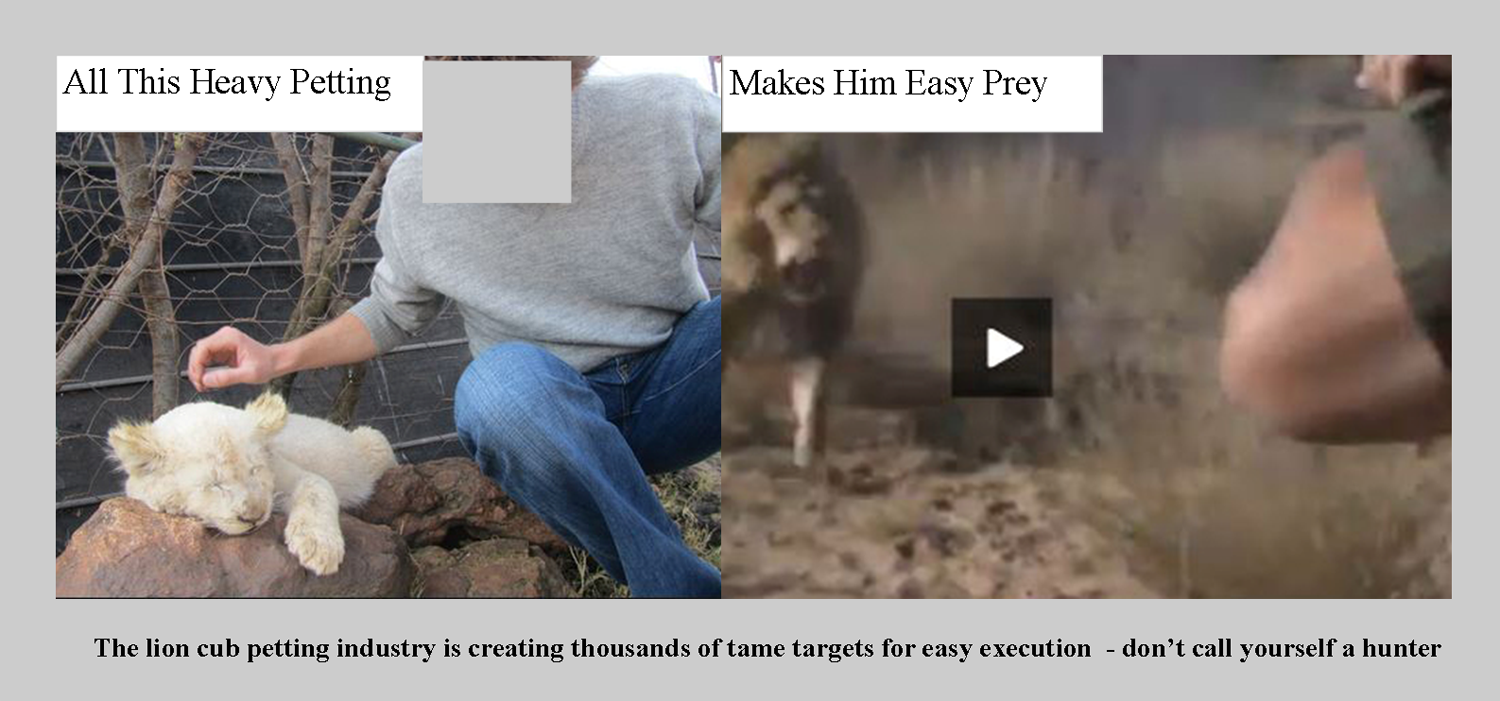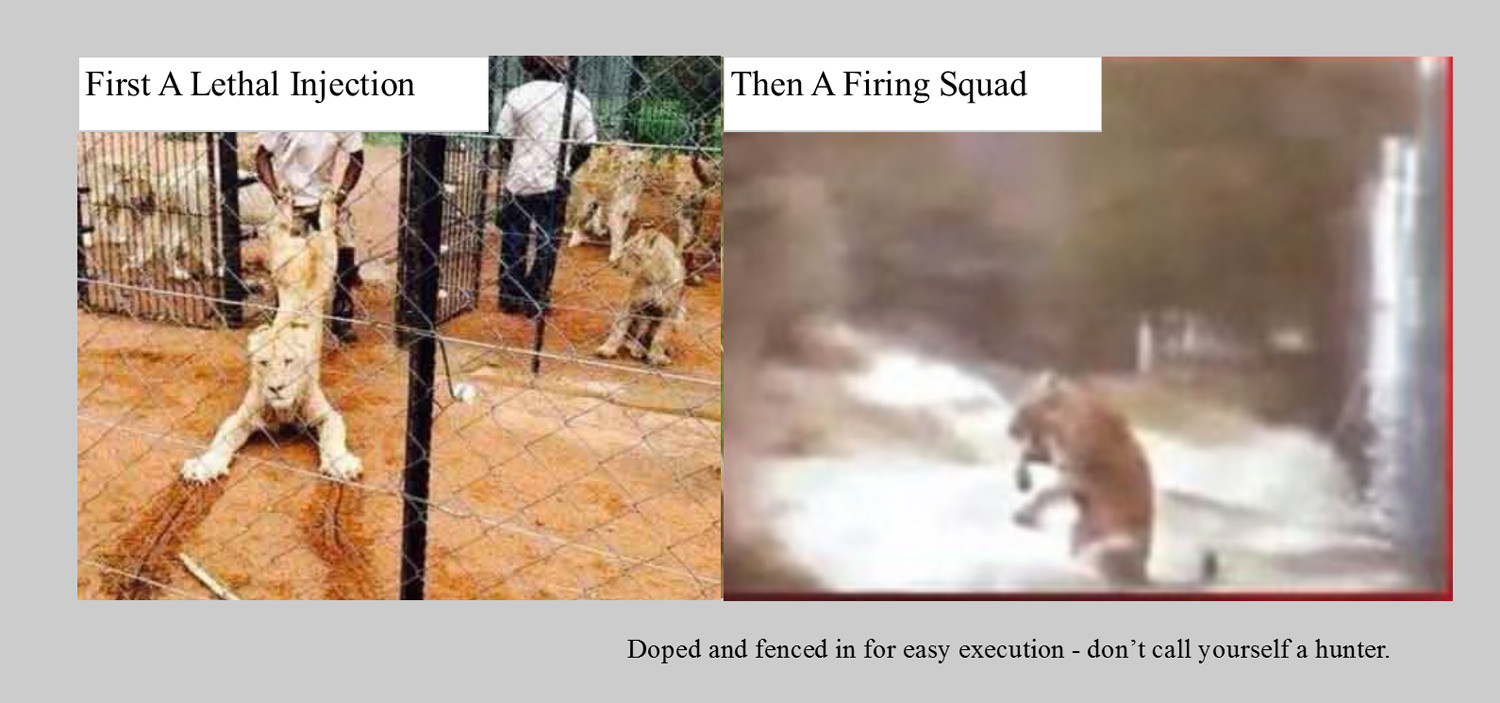As we approach the Global March for Lions on March 15th the Breaking the Brand team would like to highlight how the model we have used to create the rhino campaign can help design behaviour change adverts targeting the canned hunting industry and its ‘supply chain’, namely lion cub petting and walking safaris with lions.
As a group of people the BTB team find wildlife enthralling and we can understand why unsuspecting tourists, who feel the same way, could think of nothing more thrilling than getting up close to one of the world’s most captivating animals. We are sure that these same people would be truly mortified if they knew that in the case of lion farms what they are supporting was potentially creating victims for the canned hunting industry.
Using the Spiral Dynamics behaviour change model outlined in our previous blog we have created prototype examples of the type of adverts that could trigger behaviour change. Many of the canned hunting images are grainy as they were filmed with hidden cameras. Depending on the person targeted, namely the person seeking an amazing wildlife experience or the person involved in canned hunting, the emotion to be elicited by the adverts changes.
Advert 1: All this heavy petting makes him easy prey

Target Group 1 – People who care about lions
- Typically at green values level (in Spiral Dynamics)
- Strong affinity with conservation efforts and big cats
- Expect first-hand, close up experiences to be able to show their empathy
- Group based values system – being seen to do good is important
Target Group 2 – Big Game Hunters
- Typically at red or orange/red values level (in Spiral Dynamics)
- Need to demonstrate strength, courage, wealth, status
- If orange – expect the hunt to be organised to their wishes (customer is king)
- Individual values system – being seen to be a hero/successful is key
In order to create a successful advert, we need to address the motivations and pain points on both sides. If we don’t hook the primary target group around their motivation, they will not take notice of the ad. Hence the ad needs to feel familiar to the target group and then and only then (on closer inspection) can it trigger the pain point.
Target Group 1 (Green) –
- Motivation: Relates to ‘cute lion cub’, triggers empathy. Petting lion cub is a close-up, personal experience that can be shared with others.
- Pain Point: My indulgence and my need to help is actually creating tame targets for easy execution. I find hunting abhorrent, so I will have to abstain from my desire to pet lion cubs.
Target Group 2 (Red) –
- Motivation: Demonstrating courage, strength, power. Big Game hunting is seen as ultimate test of courage and skill.
- Pain Point: Canned hunting is cowardly and easy. I might be seen as a loser, not a hero. I hope nobody finds out that I got my trophy from a canned hunt.
Advert 2: She’s a dead cat walking to her execution

This second advert follow the same concept, motivations and pain points. In addition, given a large percentage of the customers for the canned hunting industry come from the US, we have used the term ‘Dead Cat Walking’ as ‘Dead Man Walking’ is the term sometimes used for death row prisoner on the US. In the grainy second photograph it is difficult to see but the lion being shot is up against a wall/electric fence, there is no hunting involved.
Advert 3: First a lethal injection then a firing squad

This final advert is targeted purely toward the customer of canned hunting industry. It doubly demonstrates that this is NOT hunting and goes against any ‘hunter’s code’. Look how easy we have to make it for you to manage to shoot a lion; it’s the equivalent of shooting fish in a barrel.
The Global March for Lions on March 15th has been an amazing catalyst to raise awareness of the canned hunting issue. A combination of awareness raising and education of people in general is vital. Add to that a behaviour change campaign directly targeting the three sources of funding that sustain the industry:
- Volunteers who work in lion farms under the false belief they are aiding conservation
- Tourists who visit these farms to pet lion cubs and walk with lions and
- Big game hunters who pay to shoot them in a canned hunt.
and we have a chance of getting a more immediate change as well as a sustainable change. In the meantime, make sure that if you are planning to visit a place where you can pet lion cubs or walk with lions that this venture isn’t passing their lions on to the canned hunting industry when they can’t use them anymore!
To finish, congratulations to Chris Mercer and Bev Pervan and the Campaign Against Canned Hunting (CACH) team on this fantastic initiative. To everyone reading this before March 15th check out the website: http://www.cannedlion.org/ to find a march near you.
